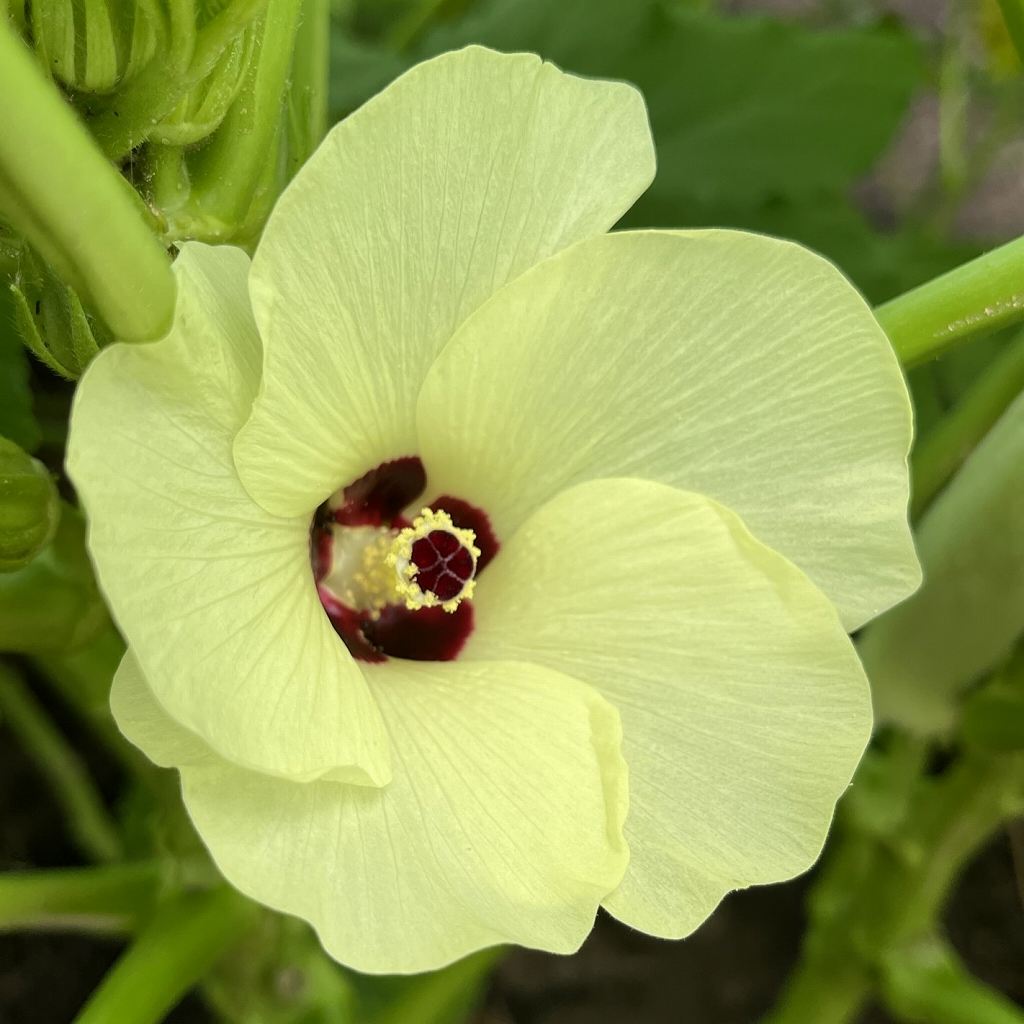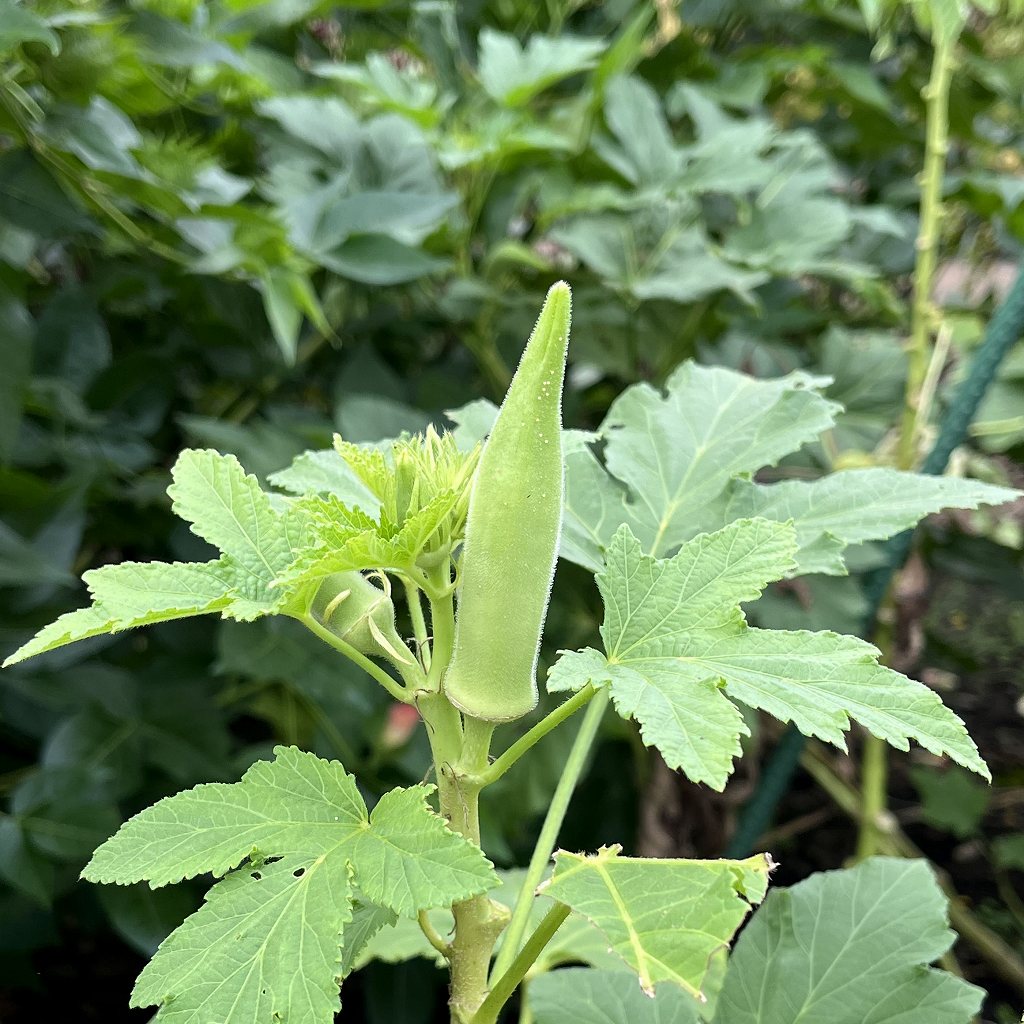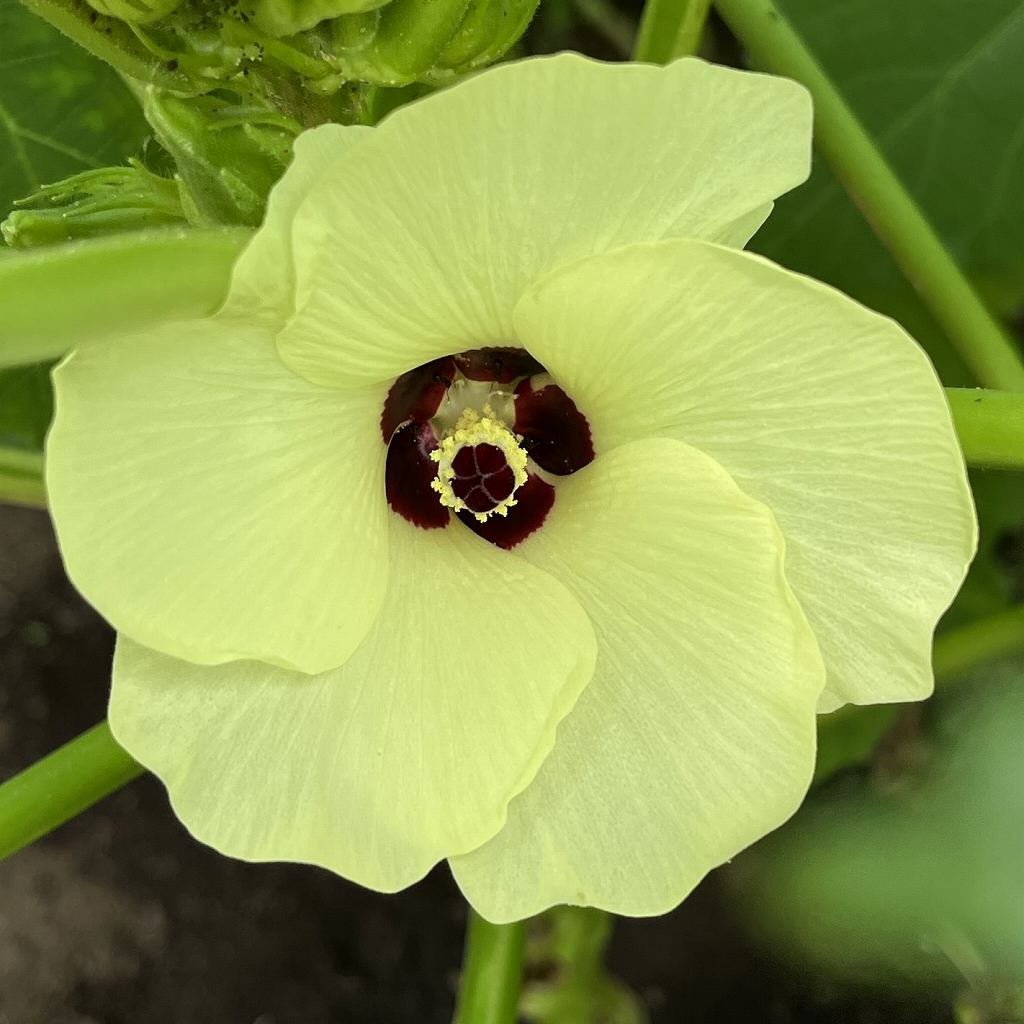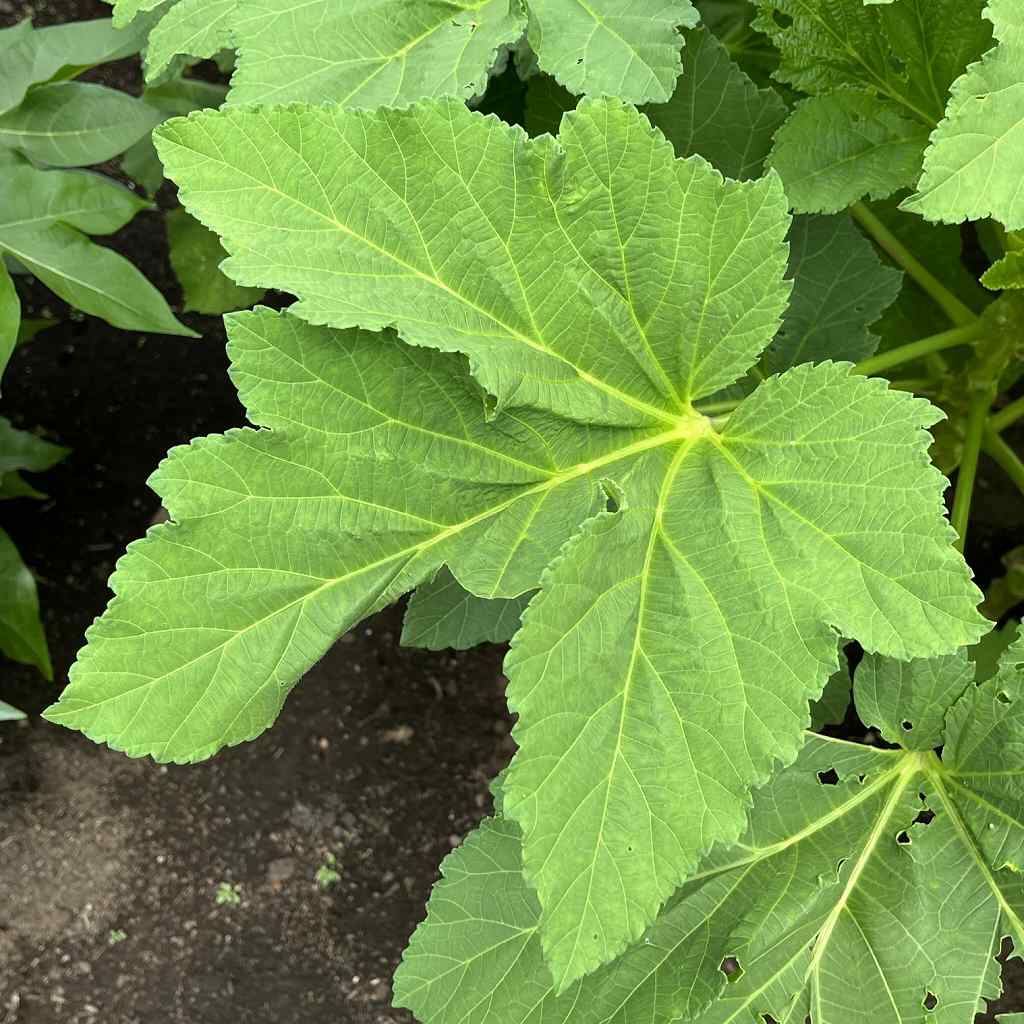オクラの花は花弁が螺旋状に重なって5枚、雄しべが雌しべに合着し、柱頭が5裂。花後は莢が上を向き、先の尖った5稜の蒴果を結びます。
Okra flower has five petals stacked in a spiral, the stamens are joined to the pistils, and the stigma is five-lobed. After flowering, the pods turn upward and produce capsules with a pointed tip and a pentagonal cross section.
【仮名】オクラ, アキアオイ, オカレンコン
【和名】秋葵, 陸蓮根
【英名】Okra
【学名】Abelmoschus esculentus
【誕生】08/ 07, 08/ 15
【開花】07, 08, 09月
【花色】White, Yellow





オクラ
オクラの概要
オクラはアオイ科の多年草です。原産地はアフリカ北東部で、寒さに弱いため、温帯では1年草。16世紀以降の奴隷貿易で、アメリカ大陸にも栽培が広がりました。日本へは江戸時代の末に伝わり、昭和30年代から栽培が本格化。丈夫で育てやすく、果実の粘り気が楽しめる野菜です。
オクラの名前
オクラの名前は西アフリカで使われているトウィ語の「ンクラマ」が転じた英名に由来。和名の秋葵は「秋」に莢が採れるから、陸蓮根は莢の輪切りを「蓮根」に見立てたからです。ラテン語の属名アベルモスクスは「麝香の父」、種小名エスクレンツスは「食べられる」という意味。
オクラの姿形
オクラは根が真っ直ぐ下に伸びます。茎は毛状突起があり、葉が互生。葉は掌状で縁に不規則な鋸歯が入ります。花は花弁が螺旋状に重なって5枚、雄しべが雌しべに合着し、柱頭が5裂。花後は莢が上を向き、先の尖った5稜の蒴果を結びます。莢の中では5つの部屋に種子を収納。
オクラの種類
オクラは果実に稜のある多角種が日本での主流で、断面が星型の五角形です。一方、果実に稜のない丸莢種は大きく柔らかく、沖縄や八丈島などで人気。そのほか、果実を加熱すると赤紫色から鮮緑色に変わる品種や、粘液が紙漉きなどに使われる近縁種「トロロアオイ」があります。
オクラの利用
オクラは刻んだり、茹でたり、炒めたり、揚げたりと様々な食べ方があります。体に良い成分は粘り気のもとでもある水溶性食物繊維ペクチン、植物性糖タンパク質ムチレージのほか、不溶性食物繊維、各種ビタミン類、ミネラル類、葉酸など。総合的に体調を整える働きがあります。
Okra
Okra is a perennial plant of the Malvaceae family. It is native to northeastern Africa, and is an annual plant in temperate zones because it is sensitive to cold. Cultivation spread to the Americas due to the slave trade from the 16th century onwards. It was introduced to Japan at the end of the Edo period, and cultivation began in earnest in the 1950s. It is a vegetable that is durable and easy to grow, and you can enjoy the sticky fruit.
The Japanese name of Okra is the same as the English name. The English name is derived from the Twi word “nkrama”, which is used in West Africa. It also has the Japanese name “autumn hollyhock” because the pods are harvested in autumn, and “land lotus root” because of the appearance of the round pods. The Latin genus name Abelmoschus means “father of musk” and the species epithet esculentus means “edible”.
Okra’s roots grow straight down. The stem has trichomes and the leaves are alternate. The leaves are palmate with irregularly toothed margins. The flower has five petals stacked in a spiral, the stamens fused to the pistils, and the stigma is five-lobed. After flowering, the pods turn upward and produce capsules with a pointed tip and a pentagonal cross section. Inside the pod, seeds are stored in five chambers.
The typical Okra varieties in Japan have a star-shaped pentagonal cross section. On the other hand, the round pod type with no ridges is large and soft, and is popular in Okinawa and Hachijojima. In addition, there are varieties whose fruit turns from reddish-purple to bright green when heated, and a closely related variety called “manihot” whose mucus is used for paper making.
Okra can be eaten in a variety of ways, including chopped, boiled, stir-fried, and deep-fried. Ingredients that are good for the body include soluble dietary fiber pectin, which is the source of stickiness, and vegetable glycoprotein mucilage, as well as insoluble dietary fiber, various vitamins, minerals, and folic acid. It works to improve your overall physical condition.


